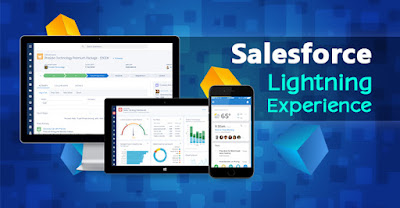WHEN HIRING SOFTWARE DEVELOMENT FIRMS
Nowadays, the corporate world is more competitive than ever. In order to survive in this world, an organization needs constant innovation. A lot of enterprises have gone online and in constant development stage. They have the best software development team and work hard to acquire a higher market share. In this race, no company wants to be left behind. The hindrance to competitiveness is not having a blue print but the lack of someone who could turn the blueprint to reality. The solution is to choose the right software development provider. Trying to hire a software develop could be a laborious, frustrating undertaking. That is why, it is very important to collate several possible companies, determine which are likely to meet one’s expectations and select the most appropriate provider from the collated list of service providers.
The first and foremost step when looking to hire a software development service provider is to look for one that could clearly understand the requirements and deliver the perfect software through transforming ideas into technical reality. It is a fact that with the popularity and continuous demand of software development, there are so many service providers that claim they are best in their niche, thus it is difficult to just trust all of these without doing an in-depth research. An organization or business seeking for software services should do a thorough research to determine which service provider will be able to deliver the software desired within the time frame.

TOP QUALITIES TO LOOK FOR IN COMPUTER SOFTWARE COMPANIES
1. Customized development approach. The first quality to look for in a software developer is whether or not it is able to provide customized development services. Customized development, undertakes analysis of the business and its objectives which the software is developed and taking into account the unique requirements of the software product. Refrain from associating with a developer that do not perform customized development and serve clients with pre-developed themes.
2. Past history of work. There are several software companies that boast of wide experience, but lacks showcasing the projects accomplished for the clientele. It’s important to determine whether the service provider in mind has dealt with similar projects and check if the job was accomplished in a suitable way. Talk to old clients if possible or ask for references.
3. Experienced team of developers. If the software project involves detailed interactions with the development team, it’s necessary to always ask which technicians would work on the project. Furthermore, it’s also important to carry out several pre-development discussions with the team to make sure that they’re capable of understanding the company’s perspective and could develop the software as required. This is integral, particularly for a project that’s long-term.
4. Pricing structure. Before hiring a software developer, make certain that the provider is transparent with the cost of the project and provide an accurate picture of the costs that would be involved in the process. If a company keeps hidden costs, then the best thing to do is to look for another service provider.
5. User experience development. Important consideration is the end user of the software and if the develop could provide the user experience desired, which is important for the project. Only a handful of software development companies have the required set of resources and the right expertise to ensure the development of excellent user experience. Go through the portfolio of the service provider and evaluate if it delivers the user experience quality in mind.
6. Information security. Always, security is a vital concern when sharing confidential information regarding the business or organization and the required information for the project development. It would be unwise to share sensitive and critical information on a project with a service provider that does not guarantee intellectual property security.
7. Maintain communication. Make sure the service provider provides constant communication. The service provider is the companion on the path to success, thus choosing a reliable one is top priority.
8. Ensure ownership of the software product. Take ownership of the source codes of the software product. The software developer should be able to provide a royalty complimentary license to the source codes, which allow continuous software development in the future.
Read more details: https://business.linkedin.com/talent-solutions/blog/2015/06/the-10-qualities-to-look-for-when-hiring-software-engineers
For any company seeking the services or looking to hire a software development service provider, it is of extreme importance to indulge in due diligence before choosing one for a custom development. The best developer is able to provide top-notch quality, able to use the latest technology tools within one’s budget and could accomplish the software project on time. Remember, the most expensive one may not always be able to provide the best service, nor the most affordable one is able to accomplish the project desired.
Nowadays, the corporate world is more competitive than ever. In order to survive in this world, an organization needs constant innovation. A lot of enterprises have gone online and in constant development stage. They have the best software development team and work hard to acquire a higher market share. In this race, no company wants to be left behind. The hindrance to competitiveness is not having a blue print but the lack of someone who could turn the blueprint to reality. The solution is to choose the right software development provider. Trying to hire a software develop could be a laborious, frustrating undertaking. That is why, it is very important to collate several possible companies, determine which are likely to meet one’s expectations and select the most appropriate provider from the collated list of service providers.
The first and foremost step when looking to hire a software development service provider is to look for one that could clearly understand the requirements and deliver the perfect software through transforming ideas into technical reality. It is a fact that with the popularity and continuous demand of software development, there are so many service providers that claim they are best in their niche, thus it is difficult to just trust all of these without doing an in-depth research. An organization or business seeking for software services should do a thorough research to determine which service provider will be able to deliver the software desired within the time frame.

TOP QUALITIES TO LOOK FOR IN COMPUTER SOFTWARE COMPANIES
1. Customized development approach. The first quality to look for in a software developer is whether or not it is able to provide customized development services. Customized development, undertakes analysis of the business and its objectives which the software is developed and taking into account the unique requirements of the software product. Refrain from associating with a developer that do not perform customized development and serve clients with pre-developed themes.
2. Past history of work. There are several software companies that boast of wide experience, but lacks showcasing the projects accomplished for the clientele. It’s important to determine whether the service provider in mind has dealt with similar projects and check if the job was accomplished in a suitable way. Talk to old clients if possible or ask for references.
3. Experienced team of developers. If the software project involves detailed interactions with the development team, it’s necessary to always ask which technicians would work on the project. Furthermore, it’s also important to carry out several pre-development discussions with the team to make sure that they’re capable of understanding the company’s perspective and could develop the software as required. This is integral, particularly for a project that’s long-term.
4. Pricing structure. Before hiring a software developer, make certain that the provider is transparent with the cost of the project and provide an accurate picture of the costs that would be involved in the process. If a company keeps hidden costs, then the best thing to do is to look for another service provider.
5. User experience development. Important consideration is the end user of the software and if the develop could provide the user experience desired, which is important for the project. Only a handful of software development companies have the required set of resources and the right expertise to ensure the development of excellent user experience. Go through the portfolio of the service provider and evaluate if it delivers the user experience quality in mind.
6. Information security. Always, security is a vital concern when sharing confidential information regarding the business or organization and the required information for the project development. It would be unwise to share sensitive and critical information on a project with a service provider that does not guarantee intellectual property security.
7. Maintain communication. Make sure the service provider provides constant communication. The service provider is the companion on the path to success, thus choosing a reliable one is top priority.
8. Ensure ownership of the software product. Take ownership of the source codes of the software product. The software developer should be able to provide a royalty complimentary license to the source codes, which allow continuous software development in the future.
Read more details: https://business.linkedin.com/talent-solutions/blog/2015/06/the-10-qualities-to-look-for-when-hiring-software-engineers
For any company seeking the services or looking to hire a software development service provider, it is of extreme importance to indulge in due diligence before choosing one for a custom development. The best developer is able to provide top-notch quality, able to use the latest technology tools within one’s budget and could accomplish the software project on time. Remember, the most expensive one may not always be able to provide the best service, nor the most affordable one is able to accomplish the project desired.
